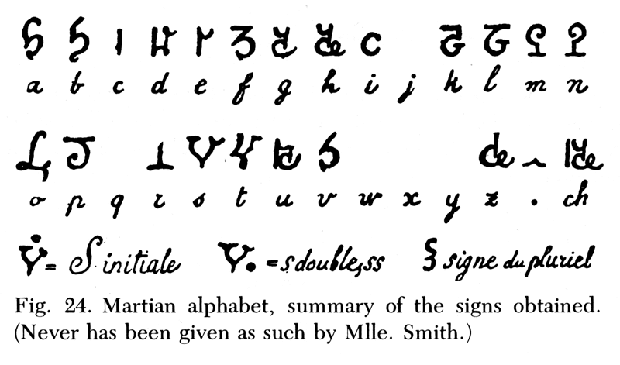Helene Smith's Extraordinary Claims: Reality or Imagination?
Written on
Chapter 1: The Enigmatic Helene Smith
Helene Smith, a renowned psychic, became notable for her assertions of encounters with Martians. However, Théodore Flournoy, a psychology professor at the University of Geneva, suggested that her narratives were merely reflections of her subconscious.

Her fame was further amplified by her proclamation of being the reincarnation of Marie Antoinette and a Hindu princess, along with her alleged communications with extraterrestrial beings from Mars.
In 1900, Flournoy's publication, “From India to the Planet Mars,” thrust Élise Müller—Smith’s real name—into the limelight. This book chronicled her various experiences, termed “romantic cycles,” which included themes such as “Martian,” “ultramarine,” “Hindu,” “Oriental,” and “real.” Despite the book's acclaim, Müller felt her experiences were misinterpreted, particularly regarding Flournoy’s view of her cycles as mere childish fantasies and her Martian language as nonsensical.
During her “Martian” phase, Smith described vivid visions of the red planet, claiming to communicate with its inhabitants. Her portrayals depicted Mars as populated by humanoid beings with Asian-like characteristics, who operated advanced technologies, including self-driving vehicles and aircraft. Notably, she described creatures resembling dogs with cabbage-like heads, which served their masters by fetching peculiar items and transcribing messages.
The “Martian” cycle later evolved into a related “Roman” cycle set in Ultra-Mars, which may refer to a different area of the planet. The ultra-Martian beings appeared more human-like and utilized ideographic writing systems instead of phonetic ones.
Flournoy posited that Smith’s different personalities and languages emerged from her subconscious fantasies, reflecting various regressive behaviors. He believed that the intricacy and oddities in her trance narratives demonstrated a subconscious urge to enthrall her audience. Nevertheless, Smith remained resistant to Flournoy's interpretations and barred him from her séances.

Chapter 2: The Divergence and Artistic Pursuits
Helene Smith was widely recognized as a spiritualist, receiving considerable support from an American spiritualist community while integrating Christian spiritualism with themes of extraterrestrial life. However, tensions with Flournoy, her earlier mentor, became evident during a public dispute over the authorship of “From India to the Planet Mars,” which Smith contended was equally her work.
In the ensuing twenty years, Smith gradually withdrew from conducting séances and turned her attention to painting, receiving notable interest from André Breton and the Surrealists. According to Flournoy, Smith possessed an extraordinary memory, allowing her to recall everything she encountered and weave imaginative tales about her supposed past lives or adventures on distant planets.
This phenomenon is not as rare as it may appear. Certain individuals, particularly those who are highly suggestible, can access deeply buried memories without hypnosis, merging them with fantasies and fabrications. The book “Annals of the Royal National Academy of Medicine — Volume CXVI — Volume 2” highlights that many instances of later-discovered plagiarism can be attributed to cryptomnesia, where individuals unknowingly reproduce content stored in their subconscious.
Despite this, discussions frequently arise about whether such situations arise from intentional deception. The complexity of the matter often leads to varying opinions based on the specific context.